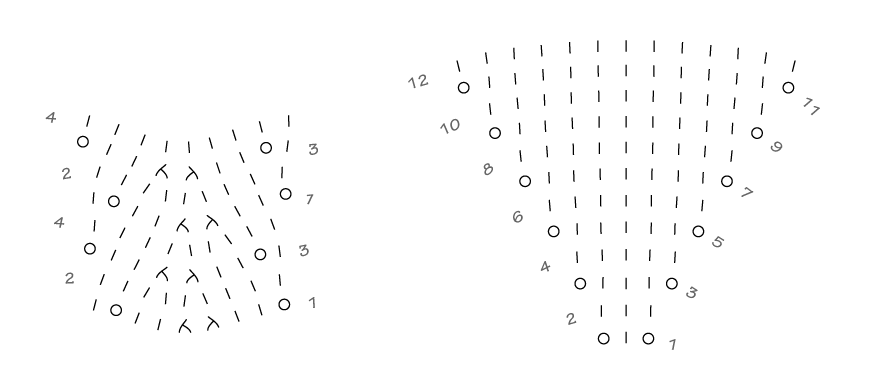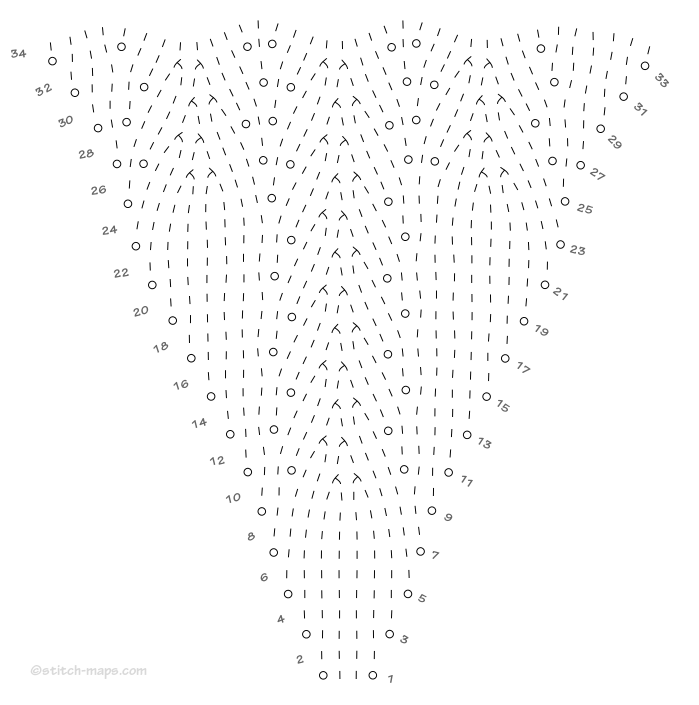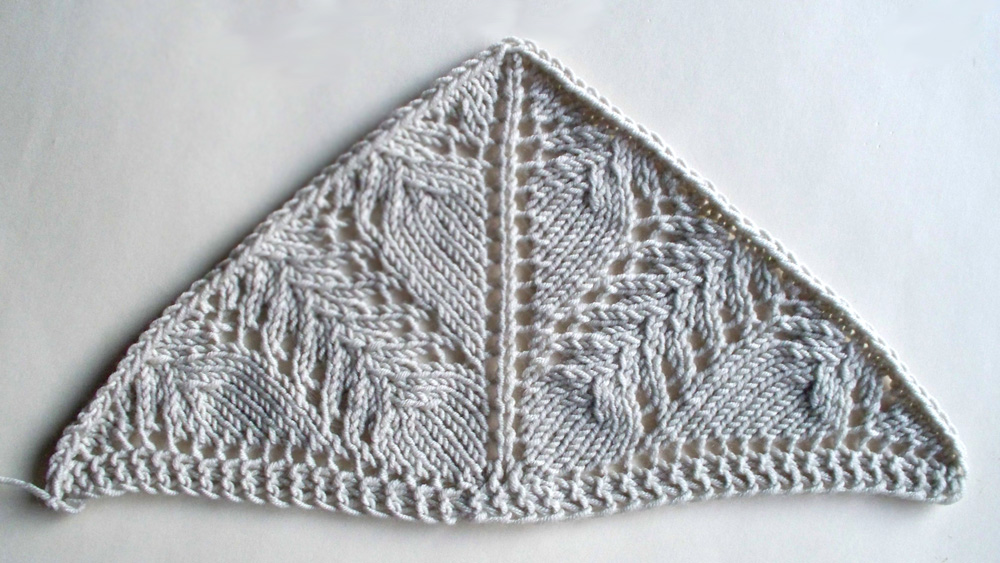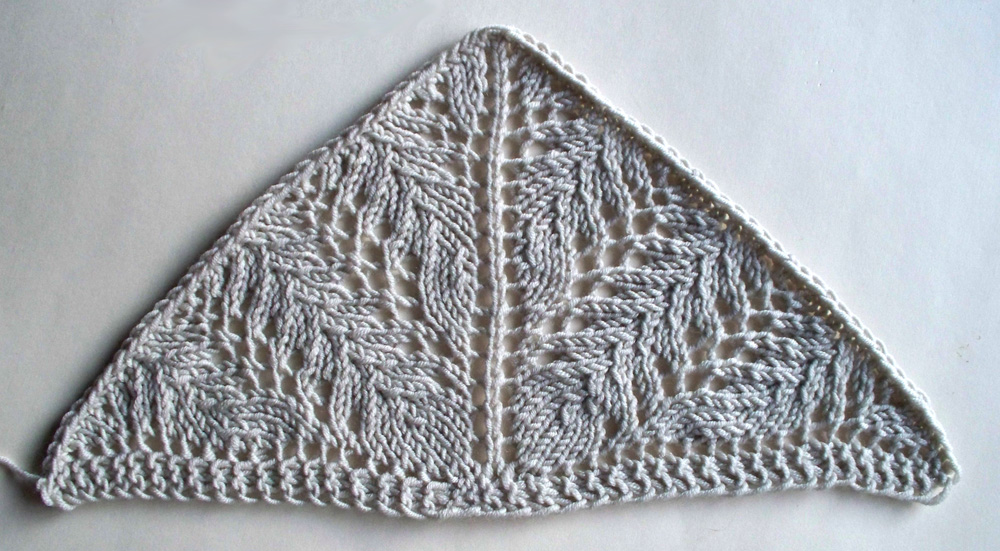Filling in the blanks
By JC | February 26, 2015
Let’s say you want to design a shawl composed of lace wedges. You have a lace pattern in mind, and you want each wedge to grow by two stitches on each right-side row. How do you get that lace pattern to fit into that wedge shape?
In Traditional Knitted Lace Shawls, Martha Waterman suggests making the wedge bigger until you have enough stitches available to work another repeat of the pattern.
But doing so leaves blank areas that I find… unsatisfying.
Another option is adding in yo/dec pairs – rather than full pattern repeats – when enough stitches become available. You hear this advice frequently because, frankly, it’s relatively easy to do. But for some stitch patterns, that doesn’t make much of a difference.
I like going a step further. I relish the challenge of filling in those blank areas as much as possible, while still maintaining the character of the stitch pattern.
This was actually a big topic of discussion during the Wedge Shawl Design class that I taught at Stitches West last weekend. We worked through a few examples as a group, and everyone had a chance to play with the stitch pattern of their choice. Many lovely wedges were created. (Alas, I didn’t get photographic proof, as I never remember to bring a camera to class.)
Still, it bothers me that I can’t quite articulate exactly how to design lace wedges without blank areas. I haven’t figured out a foolproof method that works for all kinds of lace patterns, just tips and tricks that work for some patterns. But I’ll tell you what: I’ll keep fiddling around with lace wedges, and if I make any great discoveries, I’ll let you know. Okay?








8 Comments